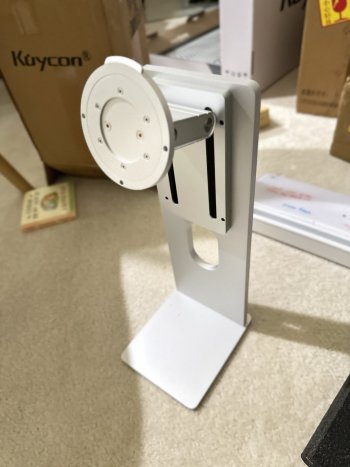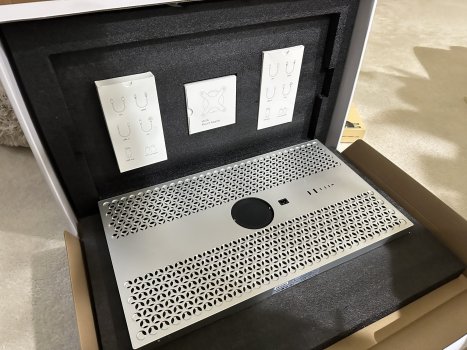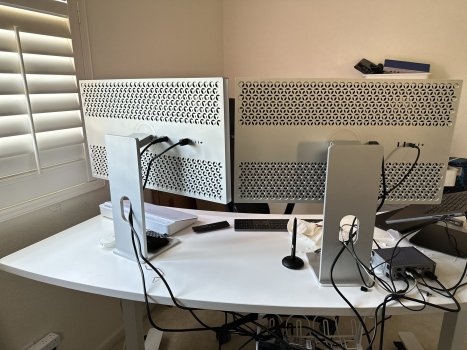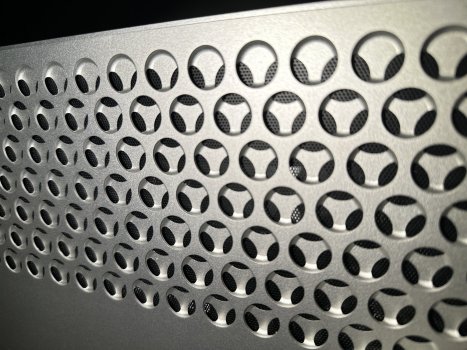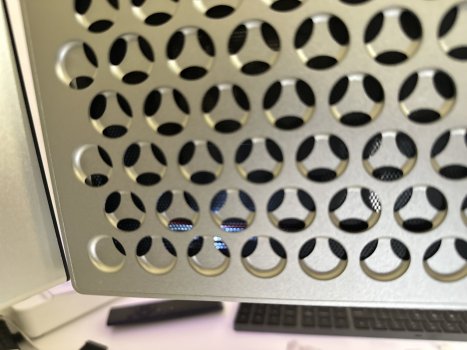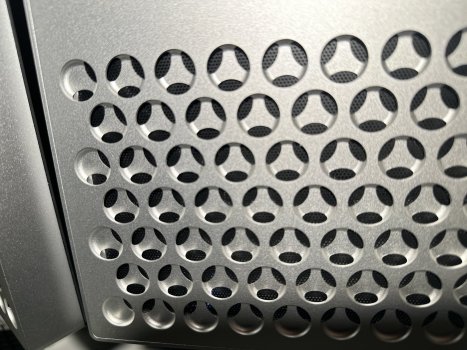It sucks taking pictures of monitors, but the left-hand image is at pixel-doubled resolution and the right-hand image is at a scaled resolution.Think I saw the info about PDF rendering on ycombinator, which tends to be people well versed in technical aspects of OS X. I don't think it is about vector vs bitmap, as normal desktop text does become slightly softer on certain non pixel-doubled modes.
Easiest thing is to test this empirically. Put your 5K into a fractional scaling mode in which you can see a difference in text/desktop elements. Then open a PDF and compare that to the exact pixel-doubled mode. I can never see any difference.
The difference is subtle but I think it's clear that the left-hand image is a tiny bit sharper. So I don't think PDF rendering gets any special treatment in MacOS.
Also, I think it speaks highly of Apple and MacOS, if you have to compare side-by-side images with a microscope to tell if you're using a scaled resolution, and even then, the difference isn't immediately obvious.
(Edit: I deleted the attached image. There's a much better one in my post below.)
Last edited:


